Latest topics
Which are the most devalued currencies?
Page 1 of 1
 Which are the most devalued currencies?
Which are the most devalued currencies?
Which are the most devalued currencies?
Devaluation is a reduction in the value of a currency with respect to other monetary units. In common modern usage, it specifically implies an official lowering of the value of a country's currency within a fixed exchange rate system, by which the monetary authority formally sets a new fixed rate with respect to a foreign reference currency. In contrast, (currency) depreciation is most often used for the unofficial decrease in the exchange rate in a floating exchange rate system.
There could be many motives of the devaluation. It stimulates exports of commodities, it restricts import demand for goods and services, and it helps in creating a favourable balance of payments. Almost all the countries of the world have devalued their currencies at one time or the other with a view to achieving certain economic objectives. During the great depression of 1930 devaluation was carried by most countries of the world for the objecting of correcting over-valuation of currencies. For some weak currencies, devaluation is a process without end that leads to completely worthless currencies, such as the ones below:
On 1 August 2008, the Zimbabwe dollar was redenominated by removing 10 zeroes and ZWD 10 billion became 1 dollar after the redenomination. On 16 January 2009, Zimbabwe issued a ZWD100 trillion bill (100,000,000,000,000 ZWD). A roll of toilet paper in Zimbabwe costs $145,750, which is about 69 American cents.
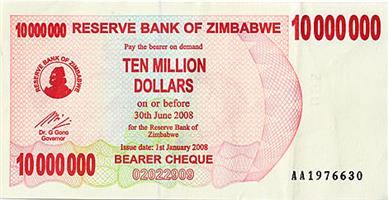
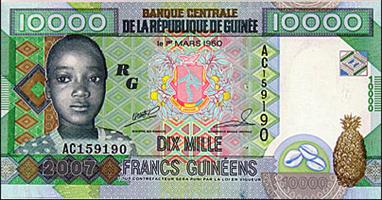
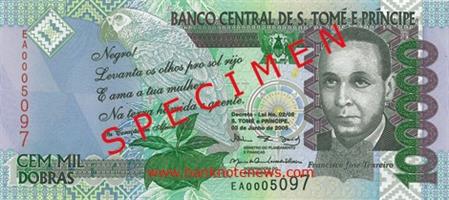
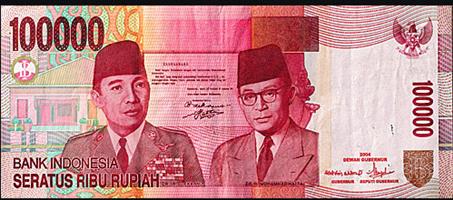
The highest denomination in 1988 was 50,000 dinars. By 1989 it was 2,000,000 dinars. In the 1990 currency reform, 1 new dinar was exchanged for 10,000 old dinars. In the 1992 currency reform, 1 new dinar was exchanged for 10 old dinars. The highest denomination in 1992 was 50,000 dinars. By 1993, it was 10,000,000,000 dinars. In the 1993 currency reform, 1 new dinar was exchanged for 1,000,000 old dinars. However, before the year was over, the highest denomination was 500,000,000,000 dinars. In the 1994 currency reform, 1 new dinar was exchanged for 1,000,000,000 old dinars. In another currency reform a month later, 1 novi dinar was exchanged for 13 million dinars (1 novi dinar = 1 German mark at the time of exchange).
The worst inflation in 1993 in Krajina had forced its central bank to issued the highest denomination at 50,000,000,000 Dinara. This country was reincorporated into Croatia in 1998. Republika Srpska, a country beside Bosnia Herzegovina, also issued a similar bank note of Dinara Krajina.
Bosnia Herzegovina declared independence from Yugoslavia in March 1992 and use the first Dinar that different from Yugoslavia Dinara, in July 1992. The highest denomination was 100 million Dinara.
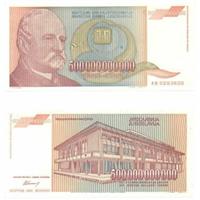
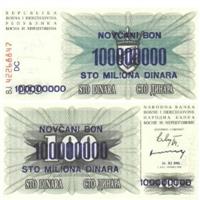
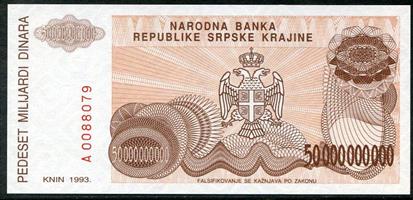
Like China, Vietnam does not allow its currency to be traded freely on currency markets, so any devaluation is essentially a political decision. But markets played a role. Traders say that currency swap market transactions, which had been running at $8 million a day at their most active, have been less than half a million dollars a day recently. Many companies have hoarded dollars or arranged trades on the black market rather than exchange dollars for dong at the official rate, traders say.
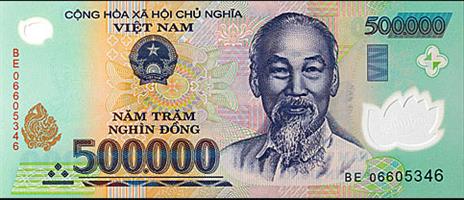
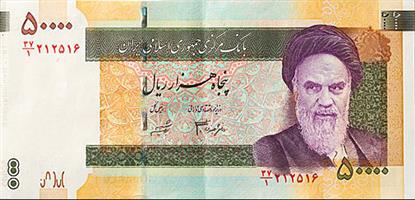
World War hyperinflation
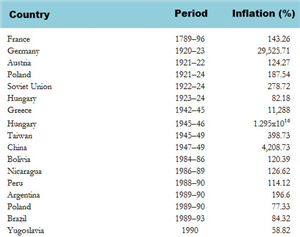
When a country experiences hyperinflation, the central bank prints money in larger denominations as the smaller denomination notes become worthless. In many cases banknotes are stamped to indicate changes of denomination, because it would take too long to print new notes and distribute them. By the time the new notes would be printed, the old ones would be obsolete.
Whenever people want to make a historical example of a hyperinflationary period, they always bring up the Weimar Republic, aka Germany in 1920-1923. Yet with a highest monthly inflation of just under 30,000%, Weimar was a true walk in the park compared to the 309,000,000% monthly inflation in 1992-1994 Serbia, but especially to the 12,950,000,000,000,000% inflation that Hungarians had to deal with in the aftermath of WWII.
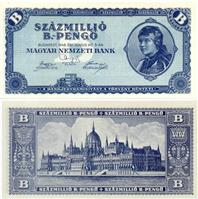
The pengő lost value after World War II, suffering the highest rate of hyperinflation ever recorded. There were several attempts to break down inflation, such as a 75% capital levy in December 1945. However, this did not stop the hyperinflation and prices continued spiralling out of control, with ever higher denominations introduced. The denominations milpengő (1,000,000 pengő) and b.-pengő (pronunciation: bilpengő) (1,000,000 milpengő, 1,000,000,000,000 pengő or one billion pengő (long scale)) were used to alleviate calculations, cut down the number of zeros and enable the reuse of banknote designs with only the colour and denomination name changed. In the middle of 1946, the highest denomination of 100,000,000,000,000,000,000 pengő (a hundred quintillion pengő) was issued. Furthermore, a banknote of ten times higher denomination was designed but did not circulate, for 1000,000,000,000,000,000,000 or a sextillion pengő or one milliard billion pengő!
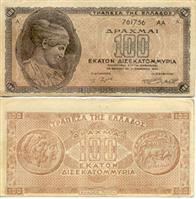
Greece suffered comparatively much more than most Western European countries during the Second World War due to a number of factors. Heavy resistance led to immense German reprisals against civilians. Greece was also dependent on food imports, and a British naval blockade coupled with transfers of agricultural produce to Germany led to famine. It is estimated that the Greek population declined by 7% during the Second World War. In 1943, prices were 34,864% higher compared to those of 1940; in 1944, prices were 163,910,000,000% higher compared to the 1940 prices. This was compounded by the country's disastrous civil war from 1944-1950.
Greece went through its worst inflation in 1944. In 1942, the highest denomination was 50,000 drachmai. By 1944, the highest denomination was 100,000,000,000 drachmai. In the 1944 currency reform, 1 new drachma was exchanged for 50,000,000,000 drachmai. Another currency reform in 1953 replaced the drachma at an exchange rate of 1 new drachma = 1,000 old drachmai. The overall impact of hyperinflation: 1 (1953) drachma = 50,000,000,000,000 pre 1944 drachmai. The Greek monthly inflation rate reached 8.5 billion percent in October 1944.
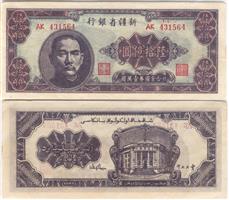
As the first user of fiat currency, China has had an early history of troubles caused by hyperinflation. The Yuan Dynasty printed huge amounts of fiat paper money to fund their wars, and the resulting hyperinflation, coupled with other factors, led to its demise at the hands of a revolution. The Republic of China went through the worst inflation 1948–49. In 1947, the highest denomination was 50,000 yuan. By mid-1948, the highest denomination was 180,000,000 yuan. The 1948 currency reform replaced the yuan by the gold yuan at an exchange rate of 1 gold yuan = 3,000,000 yuan. In less than a year, the highest denomination was 10,000,000 gold yuan. In the final days of the civil war, the Silver Yuan was briefly introduced at the rate of 500,000,000 Gold Yuan. Meanwhile the highest denomination issued by a regional bank was 6,000,000,000 yuan (issued by Xinjiang Provincial Bank in 1949).
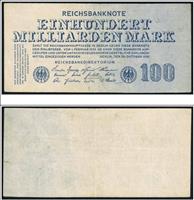
In the early 1920s Germany experienced one of the most severe inflations of all time. The inflation was not apparent in 1920, but began showing up in 1921 and got steadily worse until it came to an abrupt halt at the end of 1923. At its worst in the second half of 1923, prices rose more than fivefold each week. From the middle of 1922 until the middle of 1923, prices increased by over 100 times. Measured by the price of food, prices were 135 times higher at the end of the period than they were at the beginning. Measured by how many marks it took to buy a dollar, prices were 222 times higher. Yet even this horrid inflation was mild compared to what happened from July to November of 1923, when prices increased by somewhere between a million and a billion times their previous level.
In 1922, the highest denomination was 50,000 Mark. By 1923, the highest denomination was 100,000,000,000,000 Mark. In December 1923 the exchange rate was 4,200,000,000,000 Marks to 1 US dollar. In 1923, the rate of inflation hit 3.25 × 106 percent per month (prices double every two days). Beginning on 20 November 1923, 1,000,000,000,000 old Marks were exchanged for 1 Rentenmark so that 4.2 Rentenmarks were worth 1 US dollar, exactly the same rate the Mark had in 1914.
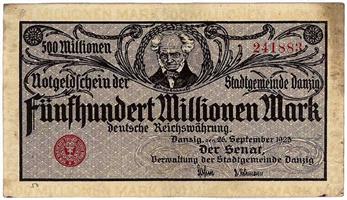
https://www.fleur-de-coin.com/articles/worthless-money
Devaluation is a reduction in the value of a currency with respect to other monetary units. In common modern usage, it specifically implies an official lowering of the value of a country's currency within a fixed exchange rate system, by which the monetary authority formally sets a new fixed rate with respect to a foreign reference currency. In contrast, (currency) depreciation is most often used for the unofficial decrease in the exchange rate in a floating exchange rate system.
There could be many motives of the devaluation. It stimulates exports of commodities, it restricts import demand for goods and services, and it helps in creating a favourable balance of payments. Almost all the countries of the world have devalued their currencies at one time or the other with a view to achieving certain economic objectives. During the great depression of 1930 devaluation was carried by most countries of the world for the objecting of correcting over-valuation of currencies. For some weak currencies, devaluation is a process without end that leads to completely worthless currencies, such as the ones below:
| 1 | Riel | Cambodia | 4035.55 per dollar |
| 2 | Guarani | Paraguay | 4659.27 per dollar |
| 3 | Guinean Franc | Guinea | 6884.50 per dollar |
| 4 | Kip | Lao | 7948.92 per dollar |
| 5 | Rupia | Indonesia | 8826.13 per dollar |
| 6 | Rial | Iran | 10,224.9 per dollar |
| 7 | Manat | Turkmenistan | 14,250 per dollar |
| 8 | Dobra | Sao Tome and Principe | 17,783.13 per dollar |
| 9 | Dong | Vietnam | 19,327.13 per dollar |
Zimbabwe (2010s)
As Americans worry about the rate of inflation exceeding 4 percent, we should consider Zimbabwe, where the inflation rate broke the shocking 100,000 percent mark and the country released a 10 million-dollar note. Hyperinflation in Zimbabwe began shortly after the destruction of productive capacity in Zimbabwe's civil war and confiscation of white-owned farmland. During the height of inflation from 2008 to 2009, it was difficult to measure Zimbabwe's hyperinflation because the government of Zimbabwe stopped filing official inflation statistics. However, Zimbabwe's peak month of inflation is estimated at 6.5 sextillion percent in mid-November 2008.On 1 August 2008, the Zimbabwe dollar was redenominated by removing 10 zeroes and ZWD 10 billion became 1 dollar after the redenomination. On 16 January 2009, Zimbabwe issued a ZWD100 trillion bill (100,000,000,000,000 ZWD). A roll of toilet paper in Zimbabwe costs $145,750, which is about 69 American cents.

Guinea (2000s)
In 2001, Guinea-Bissau suffered a substantial slowdown in economic activity, with real GDP growth estimated at 0.2 percent, as a result of a sizable loss of foreign program financing, a drop in the international market prices for cashew nuts of about 30 percent, and delays in implementing the demobilization and pre-2000 domestic arrears settlement programs. In 2002, the mineral-rich African country refused to implement reforms mandated by the International Monetary Fund. The foreign cash dried up and the central bank printed too much money. The 10,000 franc banknote was valued at approximately $2.33.
Sao Tome and Principe (2000s)
This island nation located in Africa, in the Gulf of Guinea. The country is composed of two islands called: Sao Tome and Principe and its currency is entitled "dobra". On 30 September 1977, notes were introduced for 50, 100, 500 and 1000 dobras by the Banco Nacional de São Tomé e Príncipe. In 1996, 5000, 10,000, 20,000 and 50,000 dobras notes were introduced, with the lowest denomination notes from the previous series being replaced by coins in 1997. In December 2008, the 100,000 dobras note was introduced as continuous inflation deemed the new denomination necessary. All notes bear the portrait of Rei Amador on the obverse, however, on the 100,000 dobras note is the printed portrait of Francisco José Tenreiro.
Indonesia (1990s)
The Asian financial crisis of 1997–1998 reduced the rupiah's value by over 80% in a few months and was a major factor in the overthrow of President Suharto's government. The rupiah had traded at about 2000–3000 rupiah per 1 USD, but reached a low of 16,800 rupiah per dollar in June 1998. The currency, which had been relatively stable in prior years, had its value destroyed. The government did not take any action to demonetise or revalue the banknotes, "Direksi 1998" merely redesigned the 10,000 and 20,000 rupiah notes. "Direksi 1999" saw a new Soepratman design for the 50,000 rupiah, replacing the commemorative note of Suharto, who had resigned after more than 30 years as Indonesia's president in the wake of the crisis. The banknote lineup was extended with a new denomination of 100,000 rupiah in 1999, by then worth about US$12. 500 million notes of the 100,000 rupiah polymer note were printed, to all be issued within a month of November 1999.
Yugoslavia
The Yugoslav hyperinflation of 1992–1994 was historically unique and significant due to its extreme peak and duration. At its peak, in January 1994, the monthly inflation rate reached 313 million percent, thus becoming the second highest recorded rate of inflation after the Hungarian hyperinflation of 1945–1946. In addition, the Yugoslav hyperinflation lasted 24 months.The highest denomination in 1988 was 50,000 dinars. By 1989 it was 2,000,000 dinars. In the 1990 currency reform, 1 new dinar was exchanged for 10,000 old dinars. In the 1992 currency reform, 1 new dinar was exchanged for 10 old dinars. The highest denomination in 1992 was 50,000 dinars. By 1993, it was 10,000,000,000 dinars. In the 1993 currency reform, 1 new dinar was exchanged for 1,000,000 old dinars. However, before the year was over, the highest denomination was 500,000,000,000 dinars. In the 1994 currency reform, 1 new dinar was exchanged for 1,000,000,000 old dinars. In another currency reform a month later, 1 novi dinar was exchanged for 13 million dinars (1 novi dinar = 1 German mark at the time of exchange).
The worst inflation in 1993 in Krajina had forced its central bank to issued the highest denomination at 50,000,000,000 Dinara. This country was reincorporated into Croatia in 1998. Republika Srpska, a country beside Bosnia Herzegovina, also issued a similar bank note of Dinara Krajina.
Bosnia Herzegovina declared independence from Yugoslavia in March 1992 and use the first Dinar that different from Yugoslavia Dinara, in July 1992. The highest denomination was 100 million Dinara.



Vietnam (1980s)
Vietnam became the latest Southeast Asian country to devalue its currency, as Asia's financial turmoil showed signs of pummeling even the most protected regional markets. The Vietnamese central bank allowed the country's currency, the dong, to slip to a new controlled rate of 11,800 to the dollar, a 5 percent devaluation. The bank allows the dong to trade within a 10 percent band around the target rate, and the currency fell to its floor of 12,980, an all-time low. The value of the biggest banknote in the country (500,000) is $31.37. Starting with the early 1980 the embargo of the United States stopped the exports from Vietnam, which lead to price controls and an abundance of dongs printed in the country.Like China, Vietnam does not allow its currency to be traded freely on currency markets, so any devaluation is essentially a political decision. But markets played a role. Traders say that currency swap market transactions, which had been running at $8 million a day at their most active, have been less than half a million dollars a day recently. Many companies have hoarded dollars or arranged trades on the black market rather than exchange dollars for dong at the official rate, traders say.

Iran (1970s)
In 1979, 1 rial equaled $0.0141. The value of Iran's currency declined precipitously after the Islamic revolution because of capital flight from the country. Studies estimate that the flight of capital from Iran shortly before and after the revolution is in the range of $30 to $40 billion. Whereas on 15 March 1978, 71.46 rials equaled one U.S. dollar, in July 1999, 9430 rials amounted to one dollar. The value of the Iranian rial is tightly controlled by the central bank. Iran's banknote with the highest denomination is the 50,000 rial, which is currently worth $5.35.
World War hyperinflation

When a country experiences hyperinflation, the central bank prints money in larger denominations as the smaller denomination notes become worthless. In many cases banknotes are stamped to indicate changes of denomination, because it would take too long to print new notes and distribute them. By the time the new notes would be printed, the old ones would be obsolete.
Whenever people want to make a historical example of a hyperinflationary period, they always bring up the Weimar Republic, aka Germany in 1920-1923. Yet with a highest monthly inflation of just under 30,000%, Weimar was a true walk in the park compared to the 309,000,000% monthly inflation in 1992-1994 Serbia, but especially to the 12,950,000,000,000,000% inflation that Hungarians had to deal with in the aftermath of WWII.
Hungary (1940s)
World War II caused enormous costs and, later, even higher losses to the relatively small and open Hungarian economy. The national bank was practically under government control, the issue of money was proportional to the budget demands. By this time, silver coins disappeared from circulation, and, later, even bronze and cupro-nickel coins were replaced by coins made of cheaper metal. In the last act of the world war, the Szálasi government took control of banknote printing and issued notes without any cover, first in Budapest, then in Veszprém when Budapest had to be evacuated. The occupying Soviet army issued its own military money according to the Hague Conventions.
The pengő lost value after World War II, suffering the highest rate of hyperinflation ever recorded. There were several attempts to break down inflation, such as a 75% capital levy in December 1945. However, this did not stop the hyperinflation and prices continued spiralling out of control, with ever higher denominations introduced. The denominations milpengő (1,000,000 pengő) and b.-pengő (pronunciation: bilpengő) (1,000,000 milpengő, 1,000,000,000,000 pengő or one billion pengő (long scale)) were used to alleviate calculations, cut down the number of zeros and enable the reuse of banknote designs with only the colour and denomination name changed. In the middle of 1946, the highest denomination of 100,000,000,000,000,000,000 pengő (a hundred quintillion pengő) was issued. Furthermore, a banknote of ten times higher denomination was designed but did not circulate, for 1000,000,000,000,000,000,000 or a sextillion pengő or one milliard billion pengő!
Greece (1940s)

Greece suffered comparatively much more than most Western European countries during the Second World War due to a number of factors. Heavy resistance led to immense German reprisals against civilians. Greece was also dependent on food imports, and a British naval blockade coupled with transfers of agricultural produce to Germany led to famine. It is estimated that the Greek population declined by 7% during the Second World War. In 1943, prices were 34,864% higher compared to those of 1940; in 1944, prices were 163,910,000,000% higher compared to the 1940 prices. This was compounded by the country's disastrous civil war from 1944-1950.
Greece went through its worst inflation in 1944. In 1942, the highest denomination was 50,000 drachmai. By 1944, the highest denomination was 100,000,000,000 drachmai. In the 1944 currency reform, 1 new drachma was exchanged for 50,000,000,000 drachmai. Another currency reform in 1953 replaced the drachma at an exchange rate of 1 new drachma = 1,000 old drachmai. The overall impact of hyperinflation: 1 (1953) drachma = 50,000,000,000,000 pre 1944 drachmai. The Greek monthly inflation rate reached 8.5 billion percent in October 1944.
China (1940s)

As the first user of fiat currency, China has had an early history of troubles caused by hyperinflation. The Yuan Dynasty printed huge amounts of fiat paper money to fund their wars, and the resulting hyperinflation, coupled with other factors, led to its demise at the hands of a revolution. The Republic of China went through the worst inflation 1948–49. In 1947, the highest denomination was 50,000 yuan. By mid-1948, the highest denomination was 180,000,000 yuan. The 1948 currency reform replaced the yuan by the gold yuan at an exchange rate of 1 gold yuan = 3,000,000 yuan. In less than a year, the highest denomination was 10,000,000 gold yuan. In the final days of the civil war, the Silver Yuan was briefly introduced at the rate of 500,000,000 Gold Yuan. Meanwhile the highest denomination issued by a regional bank was 6,000,000,000 yuan (issued by Xinjiang Provincial Bank in 1949).
Germany (1920s)

In the early 1920s Germany experienced one of the most severe inflations of all time. The inflation was not apparent in 1920, but began showing up in 1921 and got steadily worse until it came to an abrupt halt at the end of 1923. At its worst in the second half of 1923, prices rose more than fivefold each week. From the middle of 1922 until the middle of 1923, prices increased by over 100 times. Measured by the price of food, prices were 135 times higher at the end of the period than they were at the beginning. Measured by how many marks it took to buy a dollar, prices were 222 times higher. Yet even this horrid inflation was mild compared to what happened from July to November of 1923, when prices increased by somewhere between a million and a billion times their previous level.
In 1922, the highest denomination was 50,000 Mark. By 1923, the highest denomination was 100,000,000,000,000 Mark. In December 1923 the exchange rate was 4,200,000,000,000 Marks to 1 US dollar. In 1923, the rate of inflation hit 3.25 × 106 percent per month (prices double every two days). Beginning on 20 November 1923, 1,000,000,000,000 old Marks were exchanged for 1 Rentenmark so that 4.2 Rentenmarks were worth 1 US dollar, exactly the same rate the Mark had in 1914.
Free City of Danzig (1920s)
The Free City of Danzigwas a semi-autonomous city-state that existed between 1920 and 1939, consisting of the Baltic Sea port of Danzig (today Gdańsk) and surrounding areas. It was created on 15 November 1920 in accordance with the terms of Part III, Section XI of the Treaty of Versailles of 1919 without a referendum. Danzig worst inflation in 1923 and issued the highest denomination of 10,000,000,000 Mark.
https://www.fleur-de-coin.com/articles/worthless-money
*****************

>>>TNTBS's YouTube Channel<<<

RamblerNash- GURU HUNTER

- Posts : 24270
Join date : 2015-02-19
Page 1 of 1
Permissions in this forum:
You cannot reply to topics in this forum

» Phony Tony sez: Full Steam Ahead!
» Dave Schmidt - Zim Notes for Purchase (NOT PHYSICAL NOTES)
» Russia aren't taking any prisoners
» Deadly stampede could affect Iraq’s World Cup hopes 1/19/23
» ZIGPLACE
» CBD Vape Cartridges
» Classic Tony is back
» THE MUSINGS OF A MADMAN
» Minister of Transport: We do not have authority over any airport in Iraq
» Did Okie Die?
» Hello all, I’m new
» The Renfrows: Prophets for Profits, Happy Anniversary!
» What Happens when Cancer is treated with Cannabis? VIDEO
» An Awesome talk between Tucker and Russell Brand
» Trafficking in children
» The second American Revolution has begun, God Bless Texas
» The Global Currency Reset Evolution Event Will Begin With Gold, Zimbabwe ZWR Old Bank Notes
» Tucker talking Canada
» Almost to the end The goodguys are winning